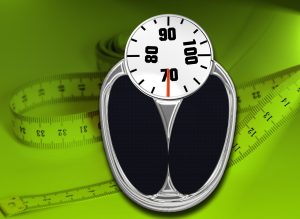There is a long-standing myth that cardiovascular disease (CVD) is primarily a male problem. As the thinking goes, men are more likely to die from CVD, while women are more likely to succumb to cancer. Yet reams of data bust that myth. It turns out that CVD is not a male-only problem; it affects women just as profoundly.
Unfortunately, misunderstandings of how CVD affects women means women are less likely to recognize the symptoms and seek treatment. And because women are less likely to seek treatment, they are more likely to be hard hit by the disease when it strikes. As a woman, you cannot afford to take CVD likely. Pay attention to your health. Undergo regular health screenings. And if you show any signs of CVD, see a doctor right away.
The Leading Cause of Death
Data clearly shows that cardiovascular disease is the number one cause of death worldwide. Over 17 million CVD-related deaths are recorded every year as compared to 8.2 million cancer deaths, 4 million deaths resulting from respiratory disease, and 1.5 million diabetes-related deaths.
If you are more into percentages, 31% of all deaths worldwide are attributable to CVD. And again, CVD is not limited to men. It is responsible for one-third of all deaths among women worldwide. The good news is that most, if not all, of these deaths are preventable.
How? By addressing behavioral risk factors. There are five in particular:
1. Smoking

It is common knowledge that tobacco use contributes to both CVD and respiratory diseases. Smokers are much more likely to develop heart disease than non-smokers. If you are a smoker, the most effective thing you can do to reduce the risk of CVD is to quit. It may not be easy, but there are plenty of resources you can avail yourself of to break the tobacco habit.
2. Diet
Next, it is also common knowledge that poor dietary choices that lead to hypertension and high cholesterol also contribute to CVD. In some hypertension cases, medication is required to bring blood pressure under control. But in others, adjusting the diet is sufficient by itself. Nearly every case of high cholesterol can be controlled by dietary choices as well.
3. Weight Management

Being overweight can contribute to the development of CVD. Being obese makes matters worse. It is all about how hard the heart has to work to keep blood pumping through the body. The more you weigh, the more work your heart has to do. As such, weight management is another effective tool for reducing the risks of CVD.
Like smoking, losing excess weight and keeping it off is not necessarily easy, and plenty of people struggle with it. But the time and effort required is well worth it if managing your weight keeps you alive longer and improves your quality of life.
4. Diabetes Management
Many people suffering from diabetes develop CVD as a result. Unfortunately, diabetes does all sorts of horrible things to the body. Therefore, it is incumbent upon diabetes patients to follow their doctors’ instructions implicitly. The better they manage their disease, the less likely it will contribute to CVD.
5. Lack of Physical Activity

Finally, a lack of physical activity definitely contributes to CVD. Remember that the heart is a muscle. Just like the muscles in your arms and legs, your heart muscle requires regular exercise to stay fit. A well-exercised heart is a strong heart.
Recognizing the Signs and Symptoms
It is important for women to learn to recognize the signs and symptoms of CVD. For example, do you know the signs and symptoms of a heart attack? Many people do not. A heart attack occurs when the supply of blood to the heart is restricted or completely cut off. If not treated quickly, a heart attack can lead to cardiac arrest and death.
The symptoms of a heart attack include:
- sudden chest pain and discomfort that feels like tightness or pressure
- pain spreading to arms, neck, jaw, and back
- light-headedness, shortness of breath, sweating
- excessive coughing or wheezing
- sudden feelings of anxiety and panic.
If you were to have a heart attack at home, would your family know what to do? In public places, your chances of survival might be greater thanks to a combination of more people to help and the growing prevalence of defibrillators for the public. Either way, you would depend on the assistance of others to help you survive a heart attack.
Ladies, cardiovascular disease is not a male-only problem. Do not believe the myths that say you don’t have to worry about it. You do. If you exhibit any of the risk factors mentioned earlier in this post, please help yourself by making an appointment with your doctor to discuss ways to avoid CVD. And if you have already been diagnosed with CVD, take good care of yourself. Those who love you want you to be around for as long as possible.
